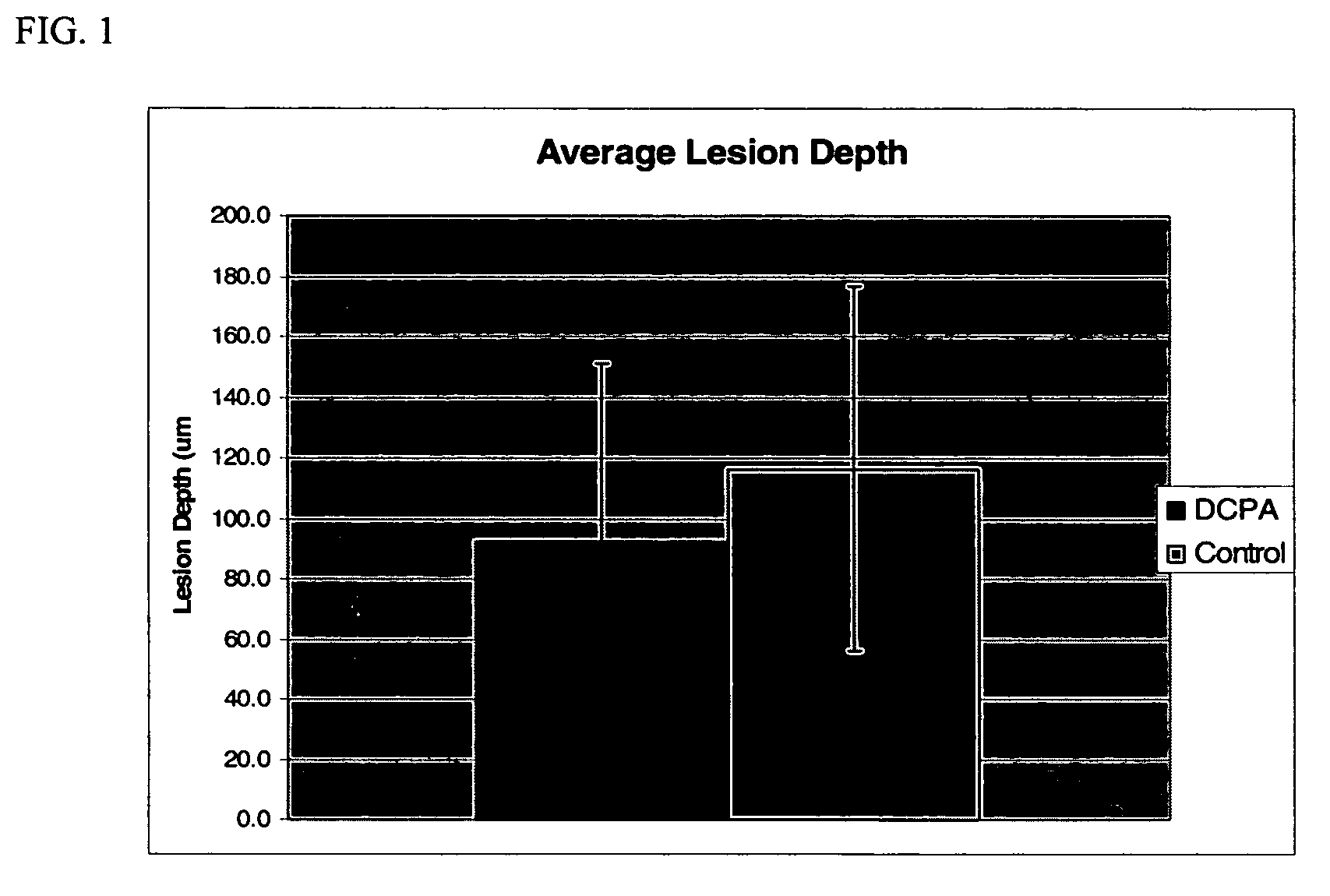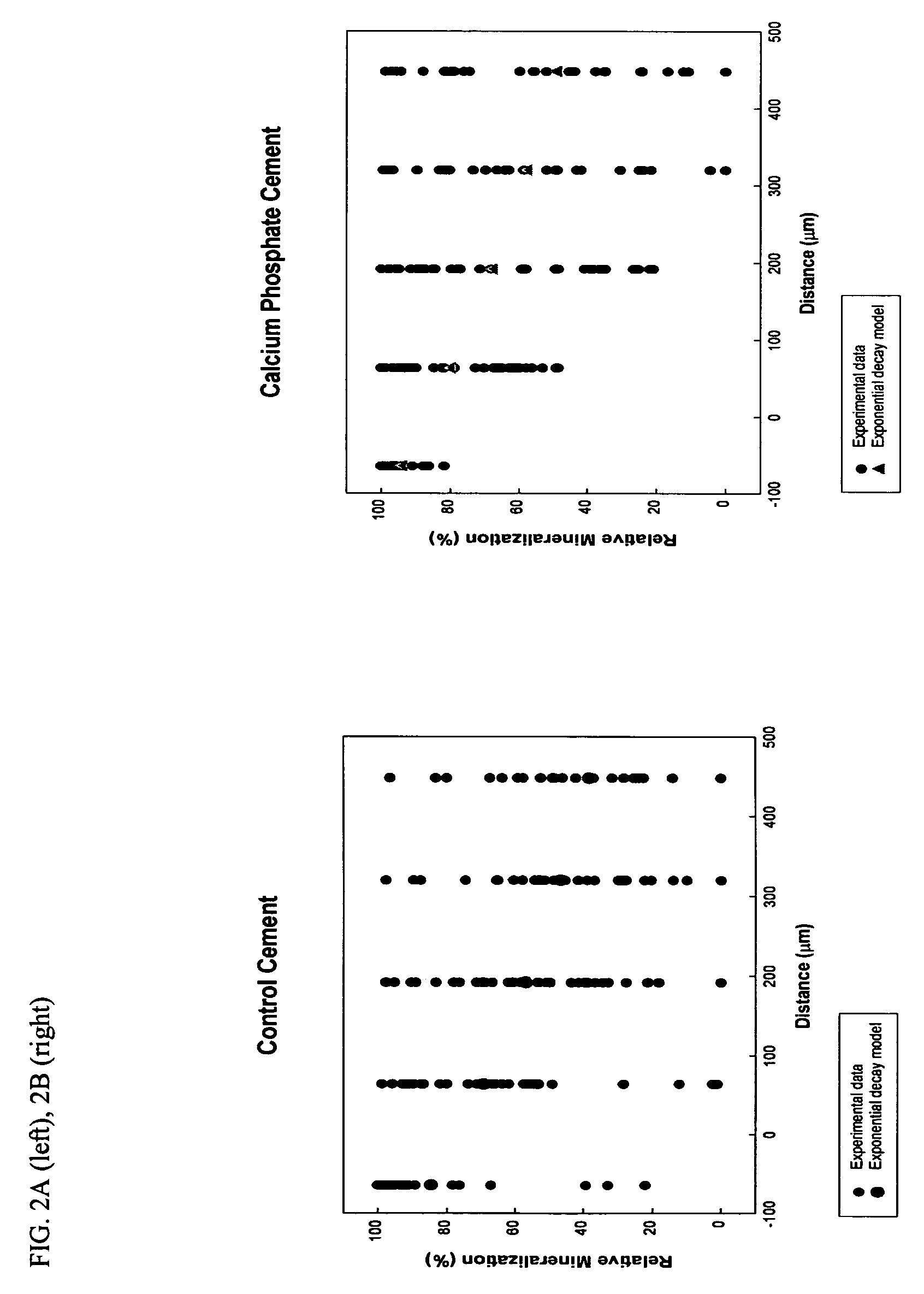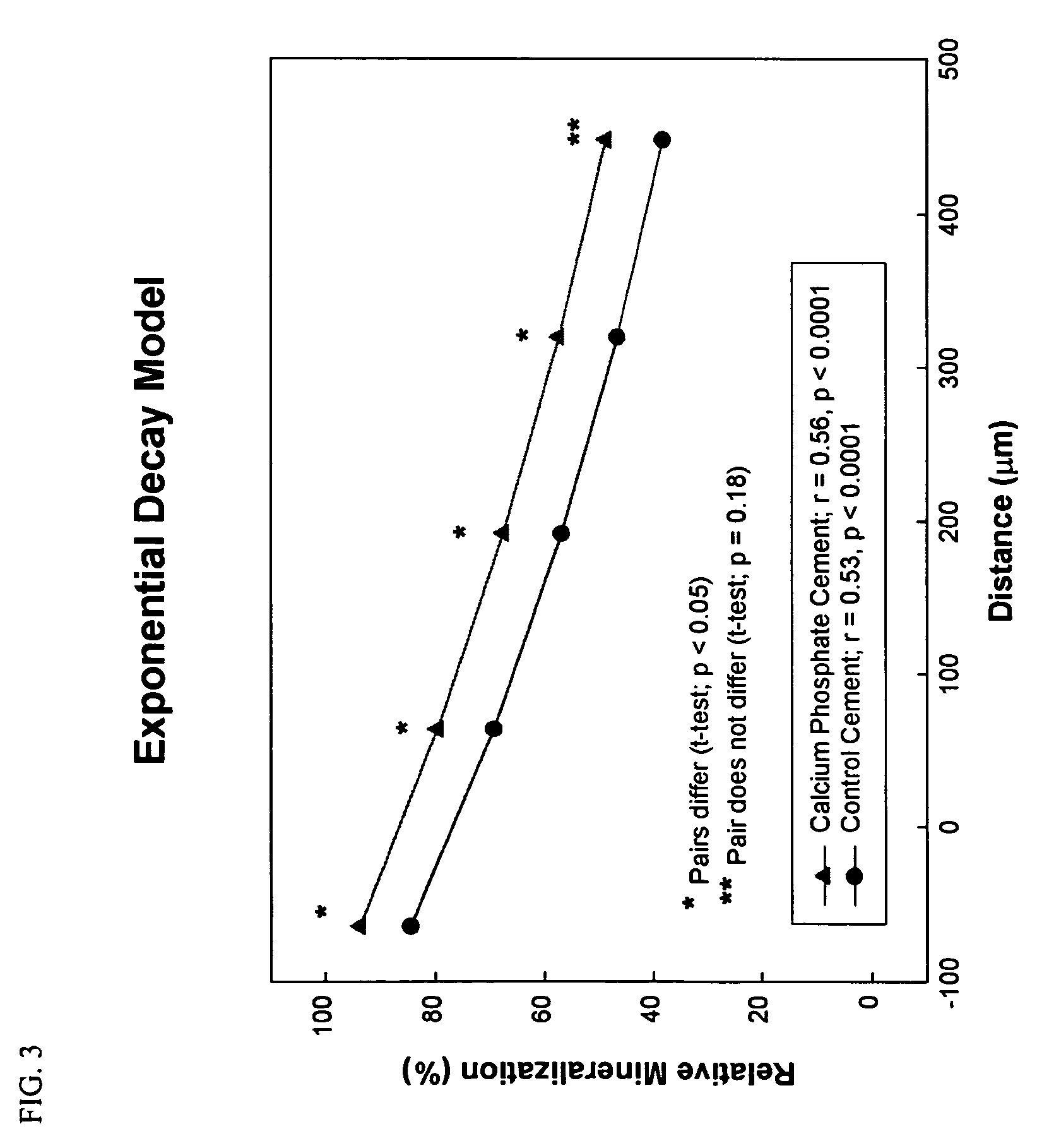Remineralizing dental cements
a technology of dental cement and remineralization, which is applied in the direction of impression caps, prostheses, teeth cappings, etc., can solve the problems of difficult cleaning and accumulation around the edges of brackets, and achieve the effect of promoting remineralization and counteracting the deleterious effects of bacterial acids
- Summary
- Abstract
- Description
- Claims
- Application Information
AI Technical Summary
Benefits of technology
Problems solved by technology
Method used
Image
Examples
example 1
[0074]Preparation of a Two-paste Adhesive Composition for Orthodontic Brackets
[0075]Two pastes as shown in Table 1 were mixed with an A:B ratio of 1:1.5 by weight. Chemically induced working time and setting time were measured with a computer-controlled thermocouple. The working time at room temperature was greater than 10 minutes. The setting time at 37° C. was 4 minutes.
[0076]
TABLE 1Two-paste adhesive composition to be mixed in a 1:1.5 weight ratioPaste A, wt %Paste B, wt %TEGDMA9.55PMGDM30.93UDMA28.64TEGDMA6.19DCPA61.11DCPA59.39DMAPE0.46CQ0.24CQ0.24BPO3.33BHT0.03
[0077]Table 2 shows a two-paste adhesive composition that can be mixed in a 1:1 weight ratio.
[0078]
TABLE 2Two-paste adhesive composition to be mixed in a 1:1 weight ratioPaste A, wt %Paste B, wt %TEGDMA9PMGDM35UDMA30TEGDMA11DCPA60UDMA25.5DMAPE0.6DCPA27.2CQ0.4BPO1BHT0.3
example 2
[0079]Measurement of Flexural Strength
[0080]Flexural strength of material prepared as described in the example above was measured at 24 hours on 2×2×25 mm bars in three-point bending. The flexural strength specimens were made by mixing paste A and paste B and light curing the molds for 20 seconds (s) on each side. They were stored in water at 37° C. Fluoride-containing pastes were also mixed for flexural strength specimens. Sodium hexafluorosilicate, Na2SiF6, was added to paste A to be 2.0% by weight of the entire A+B mixture. The bars were broken in a universal testing machine with a crosshead speed of 0.5 mm / min with a 100 N load cell.
[0081]The flexural strength of these specimens is shown in Table 3.
[0082]
TABLE 3Flexural strengthmean + / − s.d., MPa (Newton / mm2)nwith fluoride53.8 + / − 8.83without fluoride51.0 + / − 3.83
example 3
[0083]Shear Testing of Orthodontic Brackets Bound to Enamel with a Remineralizing Cement
[0084]For bonding orthodontic brackets to enamel, extracted human incisors, canines, and third molars stored in chloramine T solution were used. The teeth were rinsed and lightly dried to remove most water. The buccal surface was etched with 10% H3PO4 gel for 20 seconds and rinsed for 10 seconds, followed by 5 seconds drying with an air stream.
[0085]Paste A (0.0178 g) was mixed with paste B (0.0267 g) for 30 seconds to form a remineralizing cement (“DCPA cement”). The compositions of pastes A and B are shown in Table 1. A small amount of the paste was pushed into the mesh on the back of orthodontic brackets (stainless steel, standard edgewise orthodontic bracket, 0° torque, 0° angulation; OSE Co., Inc., Gaithersburg, Md.), and then more paste was added to form a layer approximately 1 mm thick. The brackets were adapted to the tooth surfaces and firmly pushed so that excess adhesive was extruded f...
PUM
| Property | Measurement | Unit |
|---|---|---|
| distance | aaaaa | aaaaa |
| thickness | aaaaa | aaaaa |
| thickness | aaaaa | aaaaa |
Abstract
Description
Claims
Application Information
 Login to View More
Login to View More - R&D
- Intellectual Property
- Life Sciences
- Materials
- Tech Scout
- Unparalleled Data Quality
- Higher Quality Content
- 60% Fewer Hallucinations
Browse by: Latest US Patents, China's latest patents, Technical Efficacy Thesaurus, Application Domain, Technology Topic, Popular Technical Reports.
© 2025 PatSnap. All rights reserved.Legal|Privacy policy|Modern Slavery Act Transparency Statement|Sitemap|About US| Contact US: help@patsnap.com



